When nature abounds and awash in colours and sounds, that’s Aomori. When the pink hits your eye like a cherry blossom pie, that’s Aomori. When the hiking is stunning and the ski trails are running, that’s Aomori. And when the autumn leaves are falling and Japan is calling, that’s Aomori!
As you can tell, we absolutely love Aomori Prefecture in northern Japan, and we should you should too…
Just a short shinkansen (bullet train) or flight from Tokyo, Aomori is a land of abundant nature and stillness, which is such a contrast to the bustling metropolises of Tokyo and Osaka. And whilst everyone should get a taste of big-city Japanese living on their trip to the Land of the Rising Sun, it’s by getting out of these cities and enjoying the Japanese landscape that often makes the greatest mark on travellers.
And Aomori is Japanese nature at its finest. That’s because all the seasonal elements are at play up here. In winter, Aomori is home to Japan’s snowiest city and a wonderland for skiers and snowboarders, and come autumn, this northern prefecture is THE place to witness the crimson transformation of the Japanese landscape whilst out for a cycle or a hike.
Of course, no visit to Japan would be complete without experiencing hanami – or cherry blossom viewing – and it just so happens that Aomori is easily one of the best regions in which to tick this essential item off your Japan bucket-list. And finally, blessed with gorgeous sunny days, summer is also a fantastic time to visit the north: there’s just so much to see and do outside that you’ll really appreciate the extra daylight hours!
Indeed, no matter what the time of year, a smorgasbord of seasonal splendour awaits you up in Aomori, encouraging you to get out and about and bathe in some of Japan’s finest natural beauty.
So, let’s dive in shall we?!
Spring is cherry blossom season!
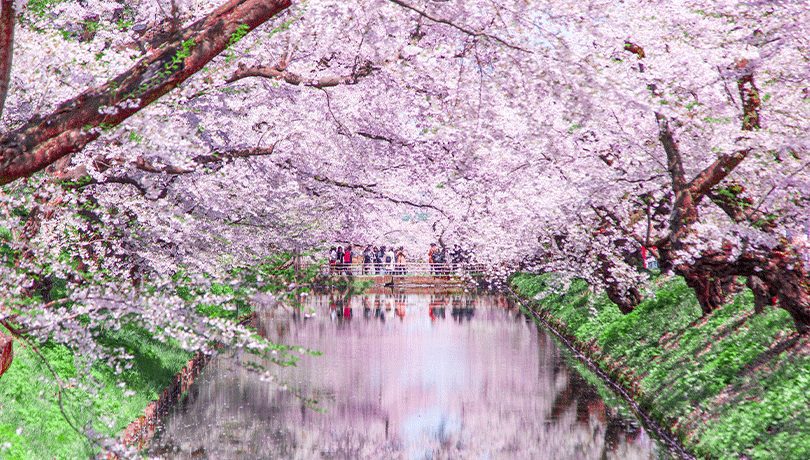
Whilst cherry blossom seasons usually begins in late March or early April down in Tokyo, Osaka and Kyoto, here, up in the most northern part of Honshu, it’s fashionably late(r). Hitting its peak pinkness from late April to early May, cherry blossoms in full bloom in Aomori Prefecture is a sight to behold (and photograph).
Hirosaki Park is undoubtedly one of the most splendid sakura experiences you’ll ever have in Japan. Home to 2,600 cherry trees and over 50 different varieties, including the most famous type, somei yoshino, as well as shidare-zakura, the weeping cherry trees, and yae-zakura, the double-layer cherry tree, the transformation of this park into a pink wonderland is simply stunning and worth the trip up here alone!
Beautiful anytime of the day and night – thanks to the Nighttime illuminations during the Hirosaki Cherry Blossom Festival – this park also has historical interest. Some of the trees here are over 100 years old, and the hirayama-styled Hirosaki Castle, the former seat of the Tsugaru clan, was construced way back in 1611. Indeed, Aomori Prefecture is one of the best locations for hanami, or cherry blossom viewing, in Japan – period!
Summer is for hiking in UNESCO wonderlands!
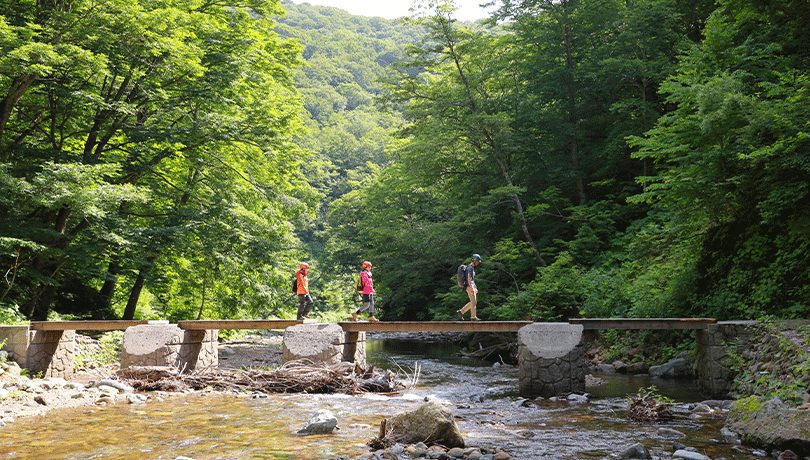
Waterfalls? Check!
Mountain peaks and virgin forests? Double check!
Lakes, canyons and gorges? Triple check!
Make sure you pack your hiking boots on a trip up to Aomori Prefecture, because this is trekking country through and through. And whilst there are plenty of places to hike in Aomori, Shirakami Sanchi – located on the border between Aomori and Akita prefectures – should definitely be at the top of your list. Awarded Japan’s first World Heritage Site in 1993 – thanks to its virgin forest of beech trees – and nicknamed the “sacred forest,” this nature reserve forest is all kinds of special.
The most popular hikes through this natural wonderland (containing all of the above features, plus much more) head to Anmon Falls and Juniko. Anmon Falls is a series of waterfalls that just get bigger the further along the path you walk (the tallest reaching nearly 50 metres), and Juniko is a family of 12 lakes, plus the mysterious sapphire blue Aoike Pond. On paper, these day hikes can be done in four hours and are suitable for all experience levels, but you’ll probably spend much longer just salivating over the stunning scenery and generally just soaking it all in.
Hardcore mountain climbers will also be happy to know that they can tick off the 1,232-metre beast that is Mount Shirakamidake up here. Not only is it the tallest mountain in the Shirakami Mountains range, it’s also spectacularly positioned overlooking the dark blue of the Sea of Japan on one side and a deep green forest of beech, Mongolian oak and Japanese wing nut trees on the other. For an extra injection of colour in your climbing adventure, visit Mount Shirakamidake in early autumn when all the leaves transform into all shades of orange, red and yellow.
Autumn is for reds, oranges and gold!
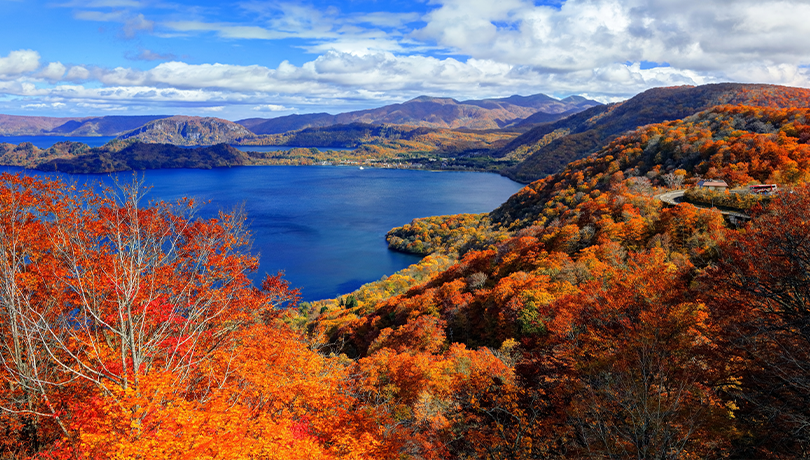
Straddling the borders between Aomori and Akita Prefectures, Lake Towada is a spectacular natural beauty with a fiery, volcanic past. Actually a caldera left behind from repeated volcanic eruptions over 200,000 years ago, these days it’s a placid paradise of deep blue water and photogenic panoramic views.
The nearby Oirase Gorge is just as scenic. A 14-kilometre-long river valley gorge littered with abundant hiking trails and gushing waterfalls through dense deciduous canopies, the gorge is often heralded as the most beautiful gorge in all of Japan with some of the most crystal-clear water you’re ever likely to see!
And although these captivating Aomori attractions are visually rewarding and impressive any time of the year, it’s in autumn that the colours come out to play. Starting in the middle of October and ending in early November, this gorgeous landscape transforms from all shades of green to all shades of red, crimson, orange and gold.
In contrast to cherry blossom season, which starts later than the rest of Japan, colourful autumn starts early up here in Aomori and its fantastic foliage display is famous all over Japan.
Of course, both of these areas are also amazing to visit in summer, and come winter time, the whole area is blanketed in majestic white powder snow. But still, when thinking autumn, think Aomori…
Winter is for snow, snow and more snow!
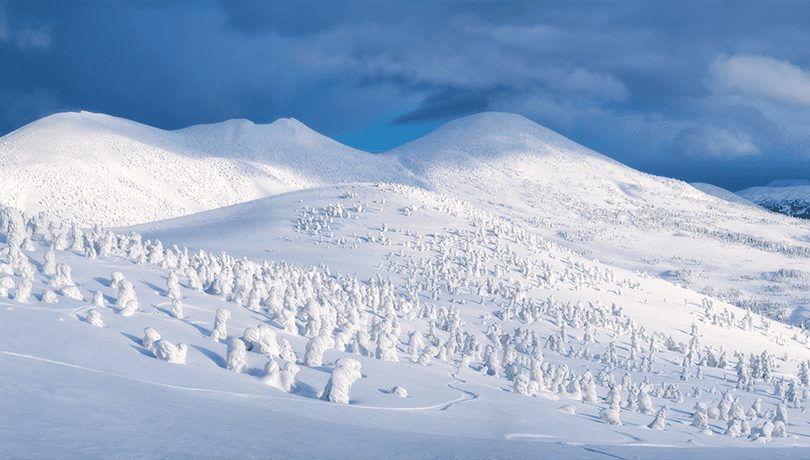
Make no mistake about it. When it snows in Aomori, it snows!
Whilst still relatively undiscovered, this northern snow paradise is blessed with tons of snowfall each year, making it the perfect adventure playground for skiers and boarders every winter.
And if getting out into the snow is your idea of a great holiday, Hakkoda Ski Resort is where you need to go. Hakkoda isn’t just famous in Aomori, but all over Japan, as it is naturally blessed with an average of 17 metres of snow volume per season, which translates to a 4+ metre snow base.
Indeed, Hakkoda is known for its excellent and abundant powder snow, as well as being a mecca for assisted backcountry skiing and off-piste riding. It’s also known for its snow monsters…
Coming out each winter to stand guard over the surrounding mountains, these otherworldly “snow monsters” are actually pine trees covered in ice and fashioned into monstrous statues by the wind. You’ll often be able to see these monsters on the gondola rides up and down the mountain, but local guides also run snow trekking tours so you can get up close and personal with these ice-coated trees – I mean “snow monsters.”
Getting there!
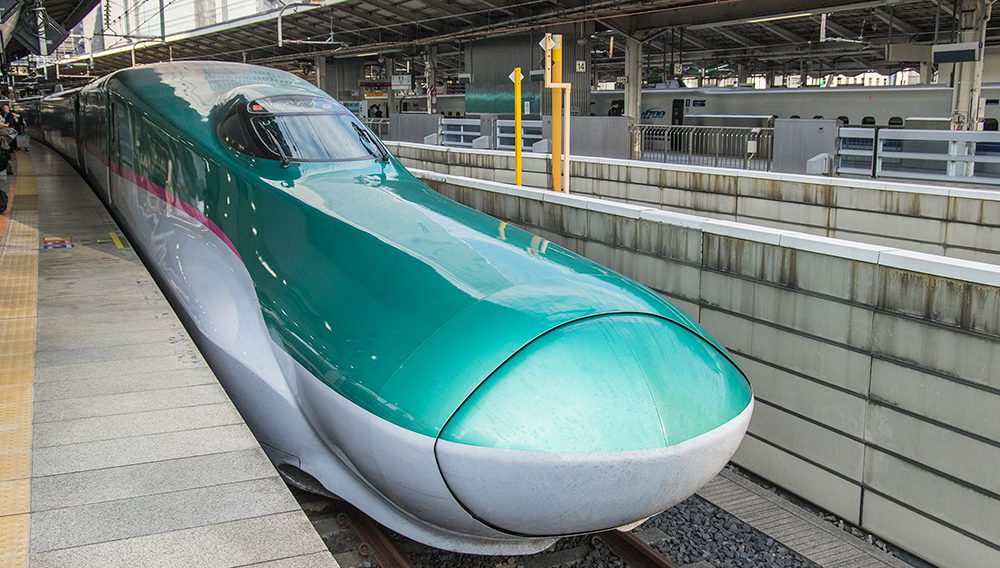
Aomori is easily accessible from Tokyo, the main entry point into the Japanese archipelago, by both plane and rail, as well as by car and bus.
The JR Tohoku Shinkansen will get to the main city of Aomori in just over three hours from Tokyo, and travellers can use their Japan Rail Pass on this route. There are four shinkansen stops in the prefecture, but Shin-Aomori station is the major station and used as the gateway to start travelling to the prefecture.
Travellers can also take regular JR trains up here, as well as highway buses, if they have more time up their sleeves. Highway buses run regularly between Tokyo and Aomori, but they will take around 8-10 hours, and are usually overnight.
Of course, travellers can also fly into Aomori. There are two airports in the prefecture – Misawa and Aomori – and both are serviced by Haneda Airport in Tokyo. It takes a little over an hour to reach either airport from Haneda, and 90 minutes if flying from Osaka. Aomori Airport also serves international flights from several countries in East Asia, while its domestic routes connect Aomori to Sapporo, Kobe and Nagoya, in addition to Tokyo and Osaka.
Travel Advisor? Get ready to learn and win
Watch the 10 minute webinar about Aomori Prefecture and discover the seasonal delights that await for the adventure-hungry Australian traveller. Then fill out the short Aomori survey for your chance to win a bottle of Kibo-no-Shizuku Apple Juice to get a taste of ‘Aomori’. Read more about the amazing Aomori apples here.
This article is brought to you by:



